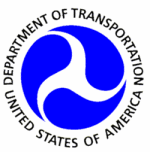Wed, Oct 13, 2010
August Numbers Show Only One Flight Over The Three Hour
Limit
 The nation's largest airlines reported only one flight in
August with a tarmac delay of more than three hours, compared to 66
flights in August 2009, with no change in the rate of canceled
flights, according to the Air Travel Consumer Report released today
by the U.S. DOT. Data filed with the Bureau of Transportation
Statistics (BTS) showed the only tarmac delay longer than three
hours reported in August by the 18 airlines that file on-time
performance with DOT involved a United Airlines flight departing
the San Juan airport on August 5 that was diverted. August
was the fourth full month of data since the new aviation consumer
rule went into effect on April 29. There were only eight
total tarmac delays of more than three hours from May through
August this year, compared to 529 during the same four-month period
of 2009. BTS is a part of DOT's Research and Innovative Technology
Administration (RITA).
The nation's largest airlines reported only one flight in
August with a tarmac delay of more than three hours, compared to 66
flights in August 2009, with no change in the rate of canceled
flights, according to the Air Travel Consumer Report released today
by the U.S. DOT. Data filed with the Bureau of Transportation
Statistics (BTS) showed the only tarmac delay longer than three
hours reported in August by the 18 airlines that file on-time
performance with DOT involved a United Airlines flight departing
the San Juan airport on August 5 that was diverted. August
was the fourth full month of data since the new aviation consumer
rule went into effect on April 29. There were only eight
total tarmac delays of more than three hours from May through
August this year, compared to 529 during the same four-month period
of 2009. BTS is a part of DOT's Research and Innovative Technology
Administration (RITA).
The largest carriers canceled 1.0 percent of their scheduled
domestic flights in August, matching the 1.0 percent cancellation
rate of August 2009. They posted a 1.4 percent cancellation
rate in July 2010.
"These numbers show that the tarmac delay rule is protecting
passengers from being trapped indefinitely aboard an airplane -
with little or no increase in canceled flights," U.S.
Transportation Secretary Ray LaHood said. "Also, it shows that the
hard work the airlines are putting into implementing the rule is
paying off. With the summer travel season behind us, it
appears that the rule is working as planned."
The new tarmac delay rule prohibits U.S. airlines operating
domestic flights from permitting an aircraft to remain on the
tarmac for more than three hours without deplaning passengers, with
exceptions allowed only for safety or security or if air traffic
control advises the pilot in command that returning to the terminal
would disrupt airport operations. The Department will investigate
tarmac delays that exceed this limit.

The monthly report also includes data on on-time performance,
chronically delayed flights, flight cancellations and the causes of
flight delays filed with the Department by the reporting
carriers. In addition, it has information on airline bumping,
reports of mishandled baggage filed by consumers with the carriers,
and consumer service, disability and discrimination complaints
received by DOT's Aviation Consumer Protection Division. This
report also includes reports of incidents involving pets traveling
by air, as required to be filed by U.S. carriers.
More News
“While legendary World War II aircraft such as the Corsair and P-51 Mustang still were widely flown at the start of the Korean War in 1950, a new age of jets rapidly came to >[...]
Decision Altitude (DA) A specified altitude (mean sea level (MSL)) on an instrument approach procedure (ILS, GLS, vertically guided RNAV) at which the pilot must decide whether to >[...]
Aero Linx: National Aviation Safety Foundation (NASF) The National Aviation Safety Foundation is a support group whose objective is to enhance aviation safety through educational p>[...]
Also: Cal Poly Aviation Club, $$un Country, Arkansas Aviation Academy, Teamsters Local 2118 In response to two recent general aviation accidents that made national headlines, more >[...]
“The FAA is tasked with ensuring our skies are safe, and they do a great job at it, but there is something about the system that is holding up the medical process. Obviously,>[...]
 Aero-News: Quote of the Day (04.28.25)
Aero-News: Quote of the Day (04.28.25) ANN's Daily Aero-Term (04.28.25): Decision Altitude (DA)
ANN's Daily Aero-Term (04.28.25): Decision Altitude (DA) ANN's Daily Aero-Linx (04.28.25)
ANN's Daily Aero-Linx (04.28.25) Airborne-Flight Training 04.24.25: GA Refocused, Seminole/Epic, WestJet v TFWP
Airborne-Flight Training 04.24.25: GA Refocused, Seminole/Epic, WestJet v TFWP Aero-News: Quote of the Day (04.29.25)
Aero-News: Quote of the Day (04.29.25)




